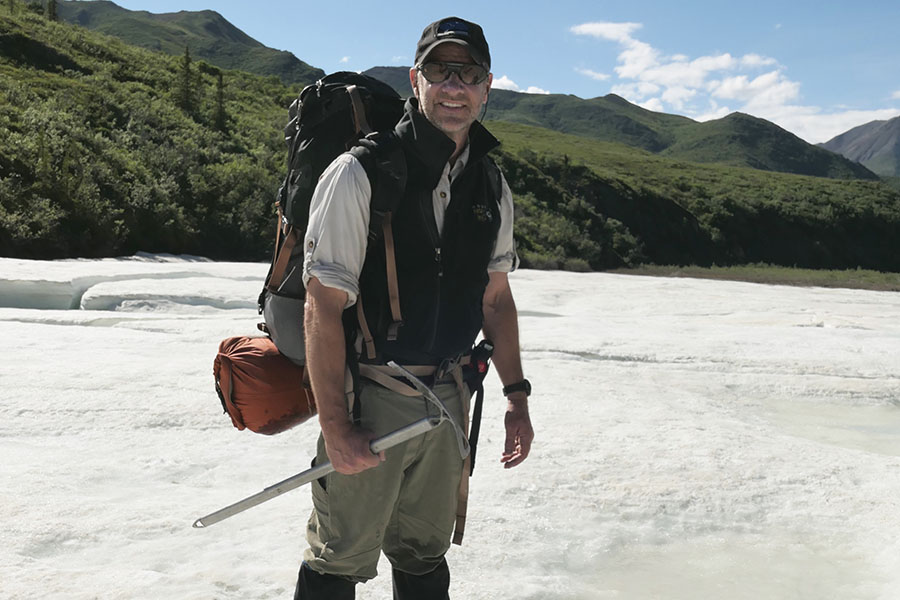
The work of a Florida State University researcher is featured in a new documentary by NOVA called “Alaskan Dinosaurs.”
FSU Professor of Biological Science Gregory Erickson, doctoral candidate Tyler Hunt and their research partner Patrick Druckenmiller from University of Alaska Fairbanks are featured in the special that details their work in Alaska. Producers filmed them working in both Denali National Park and at a site on the Colville River.
“Alaska is arguably the last frontier with regard to dinosaur discoveries — virtually unexplored because of the difficulties in accessing sites. Our work in Alaska has yielded a lot of fascinating questions and answers about dinosaurs,” Erickson said. “Our findings show that dinosaurs were definitively warm-blooded animals. They somehow endured harsh, snowbound, lightless polar winters.” This paints a new picture for these animals, once thought to be cold-blooded reptiles that solely occupied more tropical settings. The next unanswered question is how did they pull it off?”
Erickson and Druckenmiller’s partnership has yielded a number of high-profile papers including one last summer that detailed how all types of dinosaurs reproduced in the Arctic and also remained there year-round, not to mention reports of numerous new Arctic-adapted species.
Global temperatures were much warmer during the age of the dinosaurs, but the angle of the Earth’s axis was much the same as it is today. That means dinosaurs encountered about four months of darkness per year, temperatures dropping below freezing, occasionally snowbound conditions and an absence of fresh vegetation.
The hour-long special shows the researchers using snow machines in -51 F temperatures to access dinosaur sites in the Arctic along the Colville River, extracting fossils frozen in the Alaskan permafrost and rappelling down cliffs in Denali National Park to document dinosaurian tracksites using laser technology.
“Alaskan Dinosaurs” premiered January 19 and is now available online on PBS.org.




